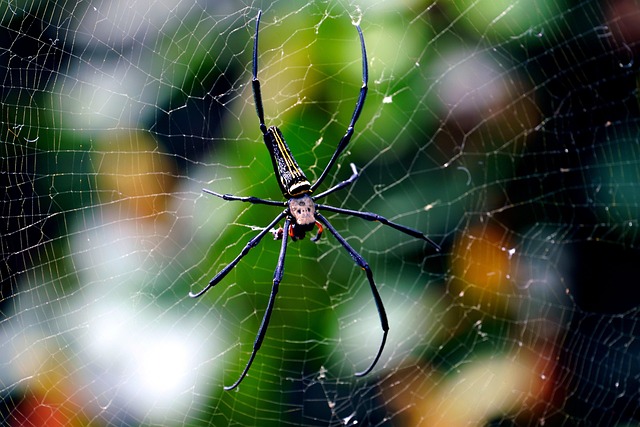Understanding spider behavior and habitat preferences is crucial for effective spider-proofing. Inspect and seal entry points, remove clutter, and clean regularly to deter spiders. Use physical barriers like caulk, screens, door sweeps, and inspect them regularly. Employ natural repellents or chemical treatments with caution, prioritizing safety and environmental protection. Implement these strategies to create a comfortable living environment free from spiders.
Tired of sharing your outdoor space with unwanted spiders? Discover effective targeted treatments to minimize spider activity around your home. This guide breaks down spider behavior, identifying entry points, and implementing physical barriers for ultimate spider-proofing. Learn about powerful natural repellents and strategic chemical applications to keep these eight-legged intruders at bay. Take control of your outdoor environment and enjoy a spider-free haven.
Understanding Spider Behavior and Habitat
Understanding Spider Behavior and Habitat
Spiders are intricate creatures with distinct behaviors that influence their habitat choices. Knowing when and where they’re most active is crucial for effective spider-proofing your home. Many species prefer dark, secluded spaces, often weaving intricate webs to catch prey. They are attracted to areas with abundant insects, making attics, basements, and cluttered corners prime real estate. By identifying these preferences, you can implement targeted treatments to deter them.
Regular maintenance plays a vital role in spider-proofing your home. Keeping spaces clean and clutter-free reduces hiding spots, while sealing entry points like cracks and gaps prevents their easy access. Understanding spider behavior allows for strategic use of natural repellents or safe, commercial treatments, ensuring a more comfortable living environment.
Identifying Entry Points and Potential Nests Around Your Home
To minimize spider activity around your home, understanding where they enter and nest is crucial for effective spider-proofing. Inspect your exterior thoroughly, focusing on areas where spiders might find their way in. Entry points can include cracks in foundations, gaps around doors and windows, or even small openings in screens. Spiders are attracted to dark, secluded spaces, so look out for potential nests such as under decks, in garden sheds, or behind woodpiles. Once these entry points and nesting areas are identified, you can seal off access points with caulk, install new screens, or remove any debris that might serve as a hiding place.
By identifying and sealing these potential avenues, you significantly reduce the chances of spiders invading your living space. Regular maintenance and prompt cleanup of any accumulations will further deter spider activity, ensuring a more comfortable and spider-free environment.
Implementing Physical Barriers and Exclusion Techniques
Implementing physical barriers and exclusion techniques is a fundamental step in spider-proofing your home. Start by sealing entry points such as gaps around doors, windows, and vents with caulk or weather stripping. These simple fixes create a physical barrier that prevents spiders from entering your living space. Additionally, use mesh screens on all openings to allow fresh air in while keeping arachnids out.
Consider installing door sweeps at the bottom of exterior doors to block entry points often overlooked. Regularly inspect and maintain these barriers to ensure they remain effective. By making these adjustments, you significantly reduce the likelihood of spider infestations and create a more comfortable living environment.
Effective Natural Repellents and Chemical Treatments
When it comes to spider-proofing your home, natural repellents offer a safe and eco-friendly approach. Plants like citronella, lavender, and catnip are known for their ability to ward off spiders due to their strong scents. Essential oils such as tea tree oil, peppermint oil, and eucalyptus oil can also be effective when diluted and sprayed around entry points and common spider habitats. These natural methods provide a peaceful solution, keeping spiders at bay without harsh chemicals.
For more robust protection, chemical treatments are available but should be used with caution. Permethrin, for instance, is a synthetic pyrethroid that remains highly effective against spiders when applied correctly. Other options include residual insecticides and outdoor sprays designed specifically for arachnid control. However, these chemicals must be handled according to manufacturer instructions and kept out of reach of children and pets to ensure safety and avoid environmental impact.
By understanding spider behavior, identifying their entry points, and employing a combination of physical barriers, natural repellents, and targeted chemical treatments, you can significantly minimize spider activity around your home. Effective spider-proofing involves a multi-pronged approach that not only reduces the risk of unwelcome arachnid visitors but also helps maintain a safer, more comfortable living environment. Remember, prevention is key, so regularly inspect and seal potential entry points to keep spiders at bay.
